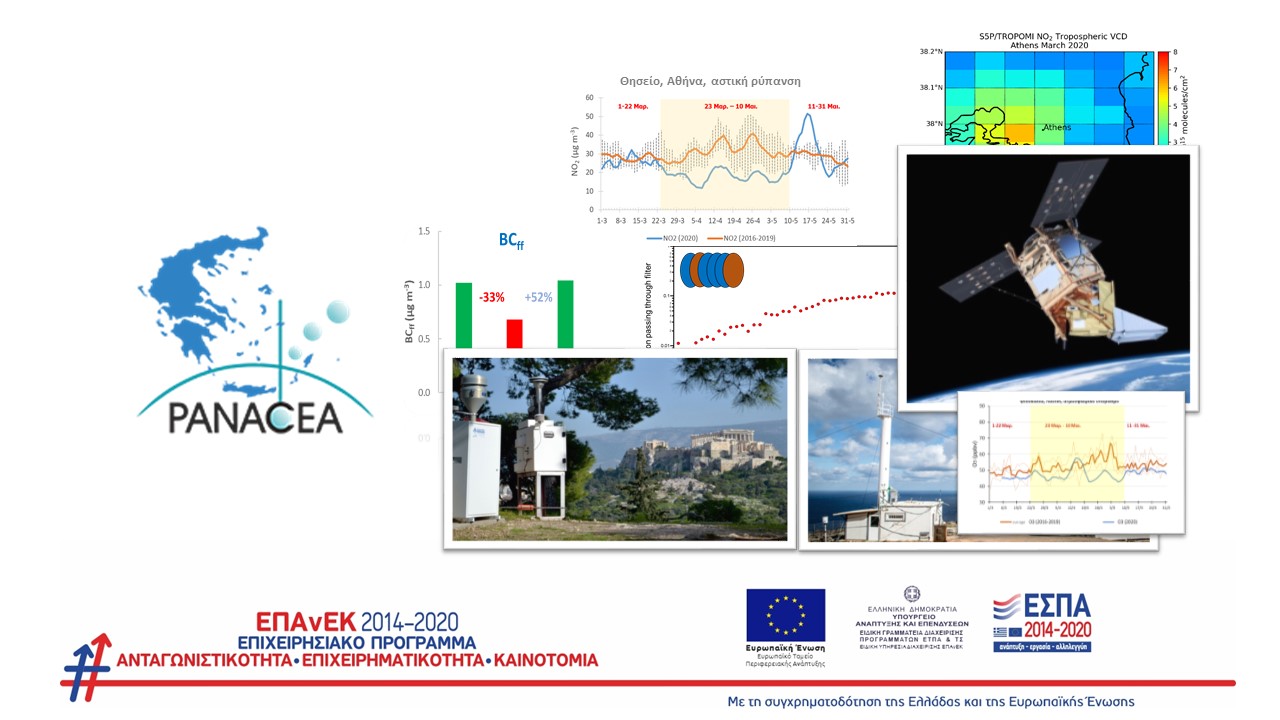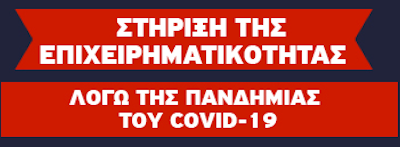Best Practices PANACEA Research Infrastructure: Actions and Findings on the COVID19 Pandemic [15/9/2020]
 The Pan-Hellenic infrastructure for the study of atmospheric composition and climate change (PANACEA) is the only integrated Research Infrastructure (EE) for the composition of the atmosphere and climate for Greece, Southern Europe and the Eastern Mediterranean. PANACEA covers the need for observation and supervision of atmospheric composition, changes in solar radiation, climate change and related natural hazards in Greece. In addition, it pioneers the provision of services in sectors of the economy affected by air pollution and climate change. The Structure has been integrated into the Action "Strengthening Research and Innovation Infrastructures" funded by the Operational Program "Competitiveness, Entrepreneurship and Innovation" (EPANEK, NSRF 2014-2020), with the co-financing of Greece and the European Union (European Regional Development Fund), with a budget of EUR 3,999,950. With the outbreak of the pandemic crisis COVID19, the PANACEA infrastructure was activated immediately in order to use its know-how and available equipment to carry out a series of actions related to COVID19 and its response measures, resulting respectively in a series of interesting findings and conclusions. In particular, the impact of measures to tackle the pandemic (lockdown) on air quality in different parts of the country was examined, and the infrastructure was also used to carry out a check on the suitability of materials for their use in masks in order to protect human health. Air pollution measurements were carried out at the following research stations as regards the examination of air quality: 1. Station of the National Observatory of Athens in Thissio (Nymphon Hill) 2. Station of the EDEFE Democritus in Agia Paraskevi 3. Station in Patras from the city's network of atmospheric measurements under the supervision of the Laboratory of Atmospheric Physics of the University of Patras in collaboration with the Laboratory for the Study of Atmospheric Pollution of the Institute of Chemical Engineering Sciences (IECHMI) 4. Station of the University of Crete in Finokalia Lassithi Remote sensing measurements were also carried out with Lidar terrestrial systems from the Laboratory of Atmospheric Physics (EIA) of the Aristotle University of Thessaloniki (ATH), the Laser Remote Sensing Unit (LRSU) of the National Technical University of Athens (NTU) in Athens and the National Observatory of Athens (EAA), on the island of Aktikythera, analyzed satellite observations from the AUTH from the high-definition Sentinel 5P satellite with the TROPOMI remote sensing instrument. Finally, noise measurements were made in Xanthi during the bans and after their total removal from the Democritus University of Thrace. The general findings of the surveys recorded a statistically significant decrease in levels for primary urban pollutants during the period of generalized measures compared to before their adoption. However, in non-urban areas where the overall atmospheric background was studied, it was observed that concentrations of gases such as carbon dioxide and methane did not show any significant influence. This shows the need for long-term measures to deal with these gases that cause global warming through global warming. With regard to the use of PANAKIA's laboratory infrastructure for the testing of materials for high protection masks for health personnel, the flexibility of the infrastructure has enabled useful conclusions to be drawn with great precision and in a short period of time. In particular, a number of plastic materials were tested for their use in high quality protective masks, in collaboration with Thrace Plastics and members of the University General Hospital of Patras. The main purpose of the measurements was to classify the particle retention rate as a function of size, taking into account the small size of the Covid-19 virus. For this reason, tests were carried out that exceed the specifications of the "routine" tests for these materials. Dozens of tests were carried out which helped to find promising materials but also to exclude less suitable materials. The results were given directly to the interested parties (Plastic Thrace and University Hospital of Patras). The activation of the PANACEA Research Infrastructure has shown that the use of EPANEK resources can make a significant contribution to direct scientific research under exceptional circumstances in order to draw useful conclusions, which can be used both for the promotion of science at national and international level and for direct practical reasons. Website: www.panacea-ri.gr  Back Back |
 infoepan@mou.gr
infoepan@mou.gr
 801 11 36300
801 11 36300













